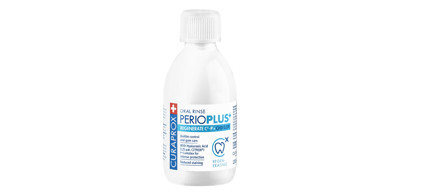implants - International Magazine
Weitere Informationen und Abo

DGZI - Deutsche Gesellschaft für Zahnärztliche Implantologie e.V.
Weitere Informationen zur Fachgesellschaft!

OEMUS MEDIA AG
Weitere Informationen zum Unternehmen!
MIS Implants Technologies GmbH
Weitere Informationen zum Unternehmen!

SEVEN
Weitere Informationen zum Produkt!
implants - International Magazine
Weitere Informationen und Abo

DGZI - Deutsche Gesellschaft für Zahnärztliche Implantologie e.V.
Weitere Informationen zur Fachgesellschaft!

Dr. Rolf Vollmer
Weitere Artikel und Informationen zum Autor
implants - International Magazine
Weitere Informationen und Abo

DGZI - Deutsche Gesellschaft für Zahnärztliche Implantologie e.V.
Weitere Informationen zur Fachgesellschaft!

OEMUS MEDIA AG
Weitere Informationen zum Unternehmen!

CAMLOG Vertriebs GmbH
Weitere Informationen zum Unternehmen!
CONELOG®
Weitere Informationen zum Produkt!

Prof. Dr. Dr. Dr. Shahram Ghanaati
Weitere Artikel und Informationen zum Autor!

Dr. Sarah Al-Maawi
Weitere Artikel und Informationen zum Autor!

Dr. rer. nat. Eva Dohle
Weitere Artikel und Informationen zum Autor!

Dr. Torsten S. Conrad
Weitere Artikel und Informationen zum Autor!

bredent medical GmbH & Co. KG
Weitere Informationen zum Unternehmen!

Prof. Dr. Dr. Dr. Shahram Ghanaati
Weitere Artikel und Informationen zum Autor!

Dr. Sarah Al-Maawi
Weitere Artikel und Informationen zum Autor!

Dr. rer. nat. Eva Dohle
Weitere Artikel und Informationen zum Autor!

Dr. Torsten S. Conrad
Weitere Artikel und Informationen zum Autor!

Dr. Dr. Branislav Fatori
Weitere Artikel und Informationen zum Autor!

Dr. Inge Schmitz (†)
Weitere Artikel und Informationen zum Autor!
Bicon Europe Ltd.
Weitere Informationen zum Unternehmen!

Dr. Dr. Branislav Fatori
Weitere Artikel und Informationen zum Autor!

Dr. Inge Schmitz (†)
Weitere Artikel und Informationen zum Autor!
Literaturverzeichnis
Weitere Informationen

Dr Nicola Alberto Valente
Weitere Artikel und Informationen zum Autor!

Dentsply Sirona
Weitere Informationen zum Unternehmen!

Dr Nicola Alberto Valente
Weitere Artikel und Informationen zum Autor!
PreXion Europe GmbH
Weitere Informationen zum Unternehmen!

PreXion3D EXPLORER
Weitere Informationen zum Produkt!

Prof. Dr. Dr. Wilfried Engelke
Weitere Artikel und Informationen zum Autor!
Curaden AG
Weitere Informationen zum Unternehmen!

Perio Plus +
Weitere Informationen zum Produkt!

Prof. Dr. Dr. Wilfried Engelke
Weitere Artikel und Informationen zum Autor!
Literaturverzeichnis
Weitere Informationen

Dr Virgilio Masini
Weitere Artikel und Informationen zum Autor!

Dr Virgilio Masini
Weitere Artikel und Informationen zum Autor!
Literaturverzeichnis
Weitere Informationen
Visions in Implantology—3th Future Congress in Dental Implantology
Weitere Informationen und Anmeldung auf unserer Website

DGZI - Deutsche Gesellschaft für Zahnärztliche Implantologie e.V.
Weitere Informationen zur Fachgesellschaft!

CAMLOG Vertriebs GmbH
Weitere Informationen zum Unternehmen!

CAMLOG Vertriebs GmbH
Weitere Informationen zum Unternehmen!

Priv.-Doz. Dr. Gerhard Iglhaut
Weitere Artikel und Informationen zum Autor!

Andrea Stix, MSc, MBA
Weitere Artikel und Informationen zum Autor!

Andrea Stix, MSc, MBA
Weitere Artikel und Informationen zum Autor!

bredent medical GmbH & Co. KG
Weitere Informationen zum Unternehmen!

CAMLOG Vertriebs GmbH
Weitere Informationen zum Unternehmen!
implants - International Magazine
Weitere Informationen und Abo
ceramic implants (engl.)
Weitere Informationen und Abo auf unserer Website
PreXion Europe GmbH
Weitere Informationen zum Unternehmen!

Straumann Group Deutschland
Weitere Informationen zum Unternehmen!
Curaden AG
Weitere Informationen zum Unternehmen!

Dentsply Sirona
Weitere Informationen zum Unternehmen!
Bicon Europe Ltd.
Weitere Informationen zum Unternehmen!

ISMI - International Society of Metal Free Implantology
Weitere Informationen zur Fachgesellschaft!
6th Annual Meeting of ISMI
Weitere Informationen und Anmeldung auf unserer Website
Programme
Weitere Informationen
Bicon Europe Ltd.
Weitere Informationen zum Unternehmen!
Register now!
Weitere Informationen

DGZI - Deutsche Gesellschaft für Zahnärztliche Implantologie e.V.
Weitere Informationen zur Fachgesellschaft!

ISMI - International Society of Metal Free Implantology
Weitere Informationen zur Fachgesellschaft!

OEMUS MEDIA AG
Weitere Informationen zum Unternehmen!
6th Annual Meeting of ISMI
Weitere Informationen und Anmeldung auf unserer Website
Visions in Implantology—3th Future Congress in Dental Implantology
Weitere Informationen und Anmeldung auf unserer Website

DGZI - Deutsche Gesellschaft für Zahnärztliche Implantologie e.V.
Weitere Informationen zur Fachgesellschaft!

OEMUS MEDIA AG
Weitere Informationen zum Unternehmen!

Straumann Group Deutschland
Weitere Informationen zum Unternehmen!
